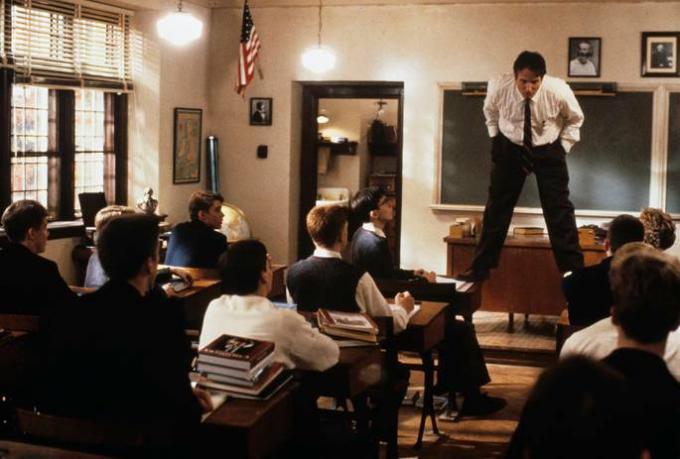In Brazil, dance has many expressions. In popular culture, we have indigenous and folk dances. The more erudite forms were introduced by renowned European dancers around the 1930s with the first ballet schools.
Dance is a universal language, an important means of expression since ancient times, just like music.
This artistic expression consists of an aesthetic coordination of body movements, combining plastic elements, grand gestures or body postures in a coherent and dynamic composition.
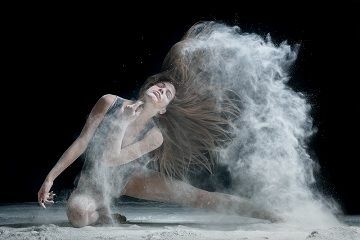 Contemporary dance
Contemporary dance
The Indigenous Dance
There are reports of records produced by the Jesuits in the 16th century, who rehearsed the indigenous people to perform dances. The best known dances are the toré, in the Northeast, and the kuarup, performed by the indigenous people of Alto Xingu, in Mato Grosso.
On the other hand, indigenous dance, similar to primitive dance, has ritual and religious aspects, it can be to celebrate events, to mark puberty, in funeral rites or to scare away illnesses.
Dance has an important social role, it is related to life and customs. They can be performed in groups or individually, women do not participate in sacred dances.
Various musical instruments are commonly used, in addition to totems, amulets and images, as well as some masks, according to the ritual's motive.
The Classical Dance
In the 15th century, ballet appeared in the courts of Italy, originating from the great street dances it became a small ball, the "balletto". Later, it was introduced in France by an Italian queen and spread to other European countries, such as England, Denmark and Russia.
In the 17th century, ballet ceased to take place in halls and began to occupy the stages, when the first dance performances appeared.
Development of Ballet in Europe
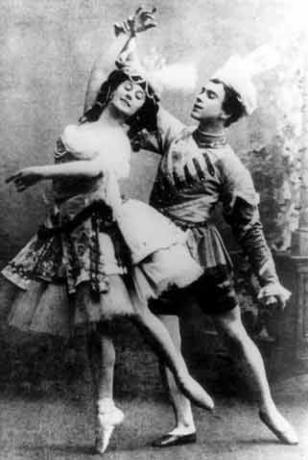 Nijinsky and Pavlova
Nijinsky and Pavlova
Ballet went through several phases, having been influenced by the romanticism in the nineteenth century, as well as the other arts.
At the beginning of this century, Diaghilev's Company, the Russian Ballet, which expanded Russian influence throughout Europe and the West, was of great importance.
Vaslav Nijinsky (one of the best known dancers and author of plays) performed in the company, as well as Michel Fokine, Anna Pavlova and Balanchine. These dancers marked this phase of classical dance, which combined a brilliant technique with certain innovations of the time.
First Ballet in Brazil
According to reports, the first ballet would have been performed in Rio de Janeiro in 1813, at the Real Theatro de São João, today João Caetano.
An important boost to Brazilian ballet is due to the visit of some renowned companies, such as Diaghilev's. In 1913 and 1917 came Nijinsky and then Pavlova (1918 and 1919), who performed at the Municipal Theater in Rio de Janeiro.
Maria Olenewa, first dancer at the Companhia de Pavlova, ended up settling in Rio de Janeiro. She managed to create a classical ballet school under her direction at the Teatro Municipal, made official in 1930.
Another school was founded during this period in Curitiba, by Tadeuz Morozowicz, the first in the south of the country. At that time, several dancers from important European companies settled in Rio de Janeiro.
The Brazilian Ballets
The first Brazilian ballets sought to create an identity using indigenous themes in their performances. As happened in other areas, such as the Indianism in literature.
The show "Arirê and the Wounded Bird", signed by Naruna Corder in the 1930s, was one of the first in the Municipal Theater of Rio de Janeiro.
During this period, ballet schools did not seek excellence in dance, as in European schools. The idea was to introduce a physical activity and even give the students notions of etiquette (most were from Rio's high society).
The shows were a way to present the work developed and at the same time educate the public unaccustomed to ballet.
First Higher Education Institution
In 1956, the School of Dance of the Federal University of Bahia (UFBA) was created, the first official institution of higher education in dance in the country.
Initially directed by Yanka Rudzka, a Polish dancer linked to the expressionism German. Rudzka developed work related to improvisation and candomblé, also with a strong theoretical component.
Important names in dance in Brazil passed through the school, such as Clyde Morgan, Dulce Aquino, Roger George, Lia Robatto, Teresinha Argolo, the couple Vianna, Graciela Figueroa, among others.
Know more about:
- Popular culture
- folk dances
- Main Characteristics of Afro-Brazilian Culture
- Types of Art
- dance history
the modern dance
At the end of the 19th century, a revolution in ballet took place, giving rise to modern dance. There is a new concern with the executed movements, which become more free, and explore themselves other possibilities of bodywork that use twists, contractions, falls and improvisations.
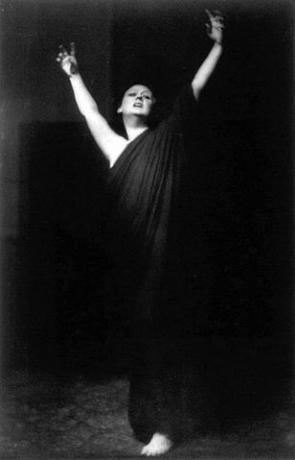 Isadora Duncan
Isadora Duncan
The American Isadora Duncan, who danced barefoot in silk dresses, reminiscent of Greek dancers, as opposed to traditional ballet costumes, caused controversy at the time.
Duncan is considered the creator of modern dance, other important names are Marta Graham, Émile Jacques-Dalcroze, Mary Wigman, Rudolf von Laban, among others.
Modern dance was introduced in Brazil by renowned dancers fleeing World War II. Luiz Arrieta, Maria Duschenes, Marika Gidali, Nina Verchinina, Oscar Araiz, Renée Gumiel and Ruth Rachou are some of those dancers who brought new ideas to the country.
Contemporary Dance
Contemporary dance is not defined in specific movements. Unlike classical and modern dance, doesn't have a code that is easily identified, so it can sometimes cause an awkwardness like: "Is this really dancing?"
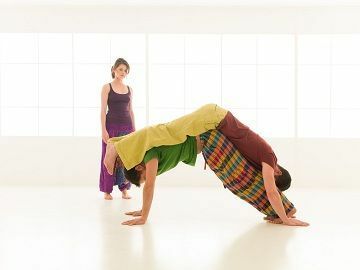 Contemporary dance techniques
Contemporary dance techniques
It is the result of the influence of other languages and the use of techniques, creating a new approach to dance that goes beyond body skill and the production of choreographies.
She uses methods such as Laban, Contact-Improvisation, as well as somatic and awareness-raising techniques. body and movement as Eutonia, Feldenkrais, Authentic Movement, Klauss Vianna (in Brazil), among others.
She is strongly related to theater and its elements, in addition to using video, photography and other forms of communication.
The Vianna Couple
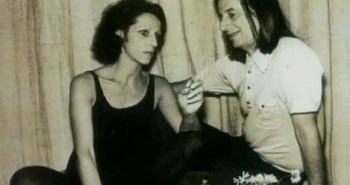 Young Angel and Klauss Vianna
Young Angel and Klauss Vianna
Klauss Vianna and his wife Angel met at school in Belo Horizonte. They studied in the 1940s at the Ballet of Belo Horizonte with Carlos Leite (a disciple of Olenewa). They started teaching in the house where they lived.
They founded the Ballet Klauss Vianna in 1959, which broke away from classical aesthetics. They moved to Salvador in 1962, to teach at UFBA, and in 1965 they moved to Rio de Janeiro, where they began to develop their work in depth.
Klauss was a pioneer in the research and application of somatic techniques, in addition to those he created as a body preparer for actors, which allowed him to develop his own method. He is considered the first to use the term "body expression" in Brazil.
Angel throughout her professional development, has always been interested in the relationship between body and mind, being referenced by her work in dance therapy and body expression.
He created the Motor Recovery and Movement Therapy course at his school. He has received several awards and honors for his work.
First Contemporary Dance School
In 1975 the couple founded their school, first called the Body Research Center - Art and Education. Thus, they inaugurated the first training course for contemporary dancers in Rio, currently called Escola e Faculdade Angel Vianna, which offers undergraduate and postgraduate courses.
To also learn about the history of other artistic manifestations, read:
- Music history
- History of Theater in Brazil
- Circus History
- Circular dance: origin, benefits and symbology

